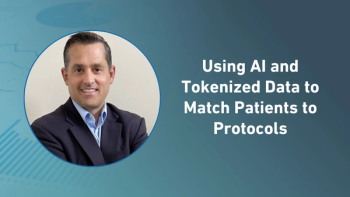
Virtual vs. On-site Investigator Meetings: Finding the Right Balance
To ensure success of clinical trials, biopharmaceutical companies must explore leveraging a variety of channels to prepare investigators. Such a process has the potential to save money and provide effective training for future trials.
Commercial teams in biopharmaceutical companies are familiar with a multichannel approach when communicating with their various customers. But what of their clinical colleagues? Although training investigators on clinical trial protocols is not always considered as requiring a multichannel approach, there are a number of ways to get the job done. But which one is most effective? Are traditional face-to-face training sessions still the gold standard? Or have virtual conferences and self-directed e-learning courses proven that online is better? Do we need to consider multichannel investigator meetings – leveraging the best aspects of each communications channel for the most effective overall training?
To help ensure the success of clinical trials, biopharmaceutical companies must find answers to these important questions because arguably, investigator meetings are the most important events that launch their clinical trials.
The Personal Touch
Traditionally, biopharmaceutical companies have used live meetings to kick off Phase I, Phase II, and Phase III clinical trials. Such events offer a personal setting, enabling face-to-face group discussion in real time. In-person meetings tend to elicit more questions and participation from attendees than virtual sessions. As in-person conferences rely much less on technology, they can be more feasible on global studies− especially when including developing countries where Internet access is limited.
In addition to the personal touch, in-person meetings facilitate peer-to-peer learning that enables experienced investigators to share their knowledge and experience with colleagues who may be new to clinical research. When researchers discuss protocol-specific subjects directly with the biopharmaceutical company sponsoring the clinical trial, they receive instant feedback on their questions and concerns. On a more intangible level, in-person meetings can create a sense of camaraderie that fosters better cooperation between sponsor company and research sites.1 In fact, a 2010 Cornell University study concluded that face-to-face meetings do three things better than virtual meetings – they capture trust, inspire positive emotions, and build relationships.2 Also, the fact that sponsor staff and research teams get to know each other early in the clinical trial process can lead to better communication throughout the study.
Prohibitive Factors
The high cost of in-person meetings, however, is a stumbling block for many sponsor companies – especially in today’s economic landscape. Investigators must commute to a meeting site from their offices, ringing up hefty travel costs plus the additional expenses from a multi-day conference. Investments in these meetings vary by company, but a typical series of Phase III investigator meetings in support of a global clinical study can cost as much as $1 million to execute.
In addition to funds spent directly on conference logistics, there is indirect financial impact. Lost productivity because investigator and sponsor staff are tied up in training for several days can be accompanied by angst about having to spend time away from family and friends. These factors can contribute to low attendance, which is estimated at 40% to 60% of those invited to attend in striking contrast to the 91% attendance rating for virtual meetings that Quintiles tracked over six months from January 2016 through June 2016.3
There’s another bottom-line factor to consider: effectiveness. Do attendees leave in-person investigator meetings knowing more than they did before? The effectiveness of conveying information via one live presentation after another − sometimes referred to as ‘death by PowerPoint’ − is questionable. Sponsor companies keep records of those who attend meetings, but there is no way to ascertain whether attendees retained the teachings or used the new knowledge in their day-to-day work.
Because of these considerations, more and more companies are leveraging technology to host virtual investigator meetings. This isn’t a new trend − nearly every large biopharmaceutical company has given investigator meetings via Web conference a try at one point with varying degrees of success.
Virtual meetings, real benefits
Virtual meetings require lengthy, meticulous planning and extensive technical support, but when properly implemented, they can deliver benefits to biopharma and investigators alike. Case in point, one global biopharmaceutical company needed to provide training to principal investigators, study coordinators and clinical research assistants for a clinical trial at more than 200 sites across North America. With less than a month to organize a comprehensive training event, the company decided to implement the meeting virtually. It arranged a fully interactive virtual investigator meeting, supported by an expert medical moderator, full logistics support, and technical management. The session tracked polling questions to certify attendance and evaluate content understanding. Pre-event surveys were conducted to tailor content and address specific study challenges.
In the end, the company successfully trained 275 attendees and experienced tenfold cost savings when compared to similar-sized, in-person meetings. In addition the event tracked ‘very high’ in content retention and received high marks for presentation. In this case, a virtual investigator meeting was just what the doctor ordered.
Here are some of the most commonly sighted benefits of virtual investigator meetings:
- Cost savings − Without the need for air travel, lodging, dining, and other expenses connected with an in-person investigator meeting, a full-service virtual meeting typically costs 10 to 50 percent less than a face-to face meeting.
- Less loss of productivity − Since no travel time is involved, a virtual meeting can save attendees one to two workdays − a significant amount of time for busy staff members.
- Higher attendance rates – Virtual meetings can generate attendance rates that are much higher than on-site meetings – often in the 90 to 100 percent range.4 Such attendance is usually most common when the meeting is supported by a comprehensive invitation campaign. Also, virtual meetings tend to have a higher rate of attendance by primary investigators as opposed to secondary-level investigators. In-person meetings often limit attendance to two people per site whereas virtual meetings are open to everyone at the site that will be involved in the study. One additional tip to encourage high attendance: track registered percentage and site representation and make these figures visible to all. Be sure to continue to monitor these numbers throughout the run up to the meeting to adjust your marketing outreach as needed.
- Capturing and measuring attention – The most common concern about online meetings is, "How do I know they're paying attention?" Any meeting, especially a long one, can tax the attention span of participants. With a virtual meeting, it is possible to track attentiveness by informing attendees that polling and chat box responses are mandatory and monitored. These measures are well-accepted by audiences and result in documented levels of participation by 80 to 90 percent of attendees.5 Plus, surveying participants ahead of the virtual meeting to get their input into the agenda and collect questions will make the meeting more relevant and thus increase engagement.
- Reinforced learning − It is well-established that the most effective training requires more than a single experience. An online training portal addresses this issue by allowing meeting participants to revisit material as often as needed to reinforce what they've learned. The same tool can be used to prepare participants ahead of time, which allows the virtual investigator meeting to be shorter and more focused on specific concerns. Other reinforcement tactics include mid-study internet conferences and periodic e-newsletters with links to online resources.
- Better documentation – An important benefit of a virtual training e-portal is that it can track and document training completion. The portal gives each learner a scoreboard that shows the completion status of product launch training modules, mid-study meetings, and protocol amendment information. This documentation proves to regulators that the sponsor company provided adequate training to protect the safety of patients in clinical trials.
- English as a second language – Increasingly, clinical research is conducted at sites where most or all of the staff speak English as a second language (ESL). Because ESL skills vary greatly, this raises concerns about training comprehension and retention. A self-training e-portal − even one delivered entirely in English − allows users to pause and repeat so they can control the pace of learning. This type of on-screen training can include a scrolling text of presenter commentary, which is a benefit to many ESL learners who understand English more easily in print than through the spoken word.
Consider the multichannel approach
An important first step for a successful investigator meeting is identifying training needs. After the needs are established, meeting organizers must decide which will be effectively addressed through a virtual event, a face-to-face meeting, the self-paced approach of an online course, or – most likely – a combination. All of these channels have their own benefits of ensuring productive engagement with sites.
When considering the various options for presenting investigator training, companies don't necessarily have to choose between a traditional on-site meeting and an all-virtual conference – they can pursue a multichannel strategy that combines on-site and remote sessions in a single live training event. Multichannel formats can provide the best of both worlds − personal contact and more intense training for some audiences; and low cost, convenient, online training for others. Multichannel meetings can include the "attendee choice" model in which participants can choose to travel to a training site for a live conference, or stay home and complete online training.6
For all of the multichannel options, companies should consider the following to promote high attendance and keep participants engaged, no matter which format they participate:
- Engage with participants ahead of the meeting (in-person or virtual).
- Ensure the agenda, technology and content are cohesive and focused on the key learning objectives.
- Coach and rehearse with the presenter, who may be an expert in clinical trials but not an experienced speaker. Confirm the presenter is comfortable with the meeting format and the technology he/she will be using.
- Allow for plenty of interaction between presenters and attendees.
- Use short presentations with clear learning points, videos and animations.
- Employ multiple mechanisms to connect with the audience such as quizzes, pre-meeting polls, Q & A sessions and breakout meetings.
By leveraging a variety of channels to prepare investigators for a clinical trial, companies not only may save many thousands of dollars per meeting but also provide effective training to help run more efficient, compliant and successful trials.
Simon Francis is the Director of Health Engagement & Communicatons for Quintiles
References
- “Inside Investigator Meetings,” Pharmica Consulting, 2013. For more:
http://www.pharmicaconsulting.com/wp-content/uploads/2013/05/New-Inside-Investigator-Meetings.pdf - “Why We Need to Meet in Person,” Susan Adams, Forbes, 2011. For more:
http://www.forbes.com/ - “Inside Investigator Meetings,” Pharmica Consulting, 2013. For more:
http://www.pharmicaconsulting.com/wp-content/uploads/2013/05/New-Inside-Investigator-Meetings.pdf - “Virtual Meetings Offer Solid Benefits for Investigators,” PharmExec.com, 2007. For more:
http://www.pharmexec.com/virtual-meetings-offer-solid-benefits-investigators - “Virtual Meetings Offer Solid Benefits for Investigators,” PharmExec.com, 2007. For more:
http://www.pharmexec.com/virtual-meetings-offer-solid-benefits-investigators - “Inside Investigator Meetings,” Pharmica Consulting, 2013. For more:
http://www.pharmicaconsulting.com/wp-content/uploads/2013/05/New-Inside-Investigator-Meetings.pdf
Newsletter
Stay current in clinical research with Applied Clinical Trials, providing expert insights, regulatory updates, and practical strategies for successful clinical trial design and execution.






.png)



.png)



.png)
.png)
